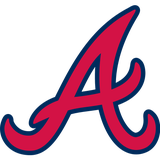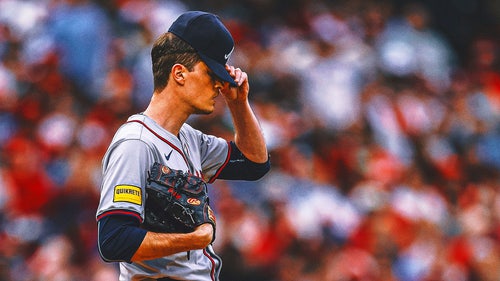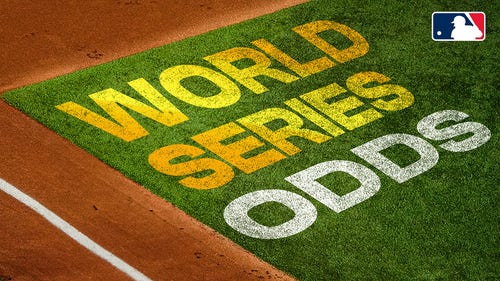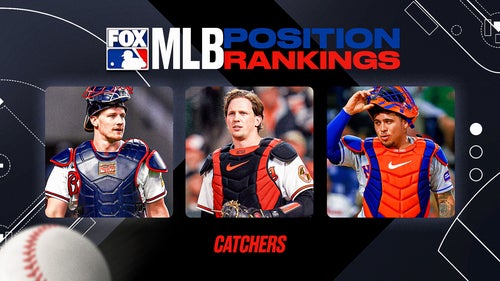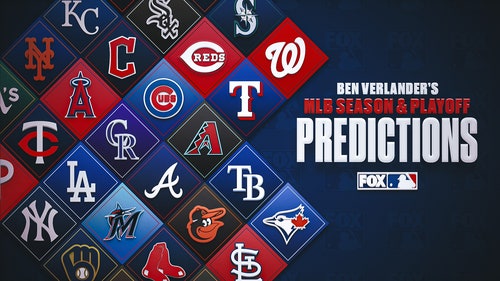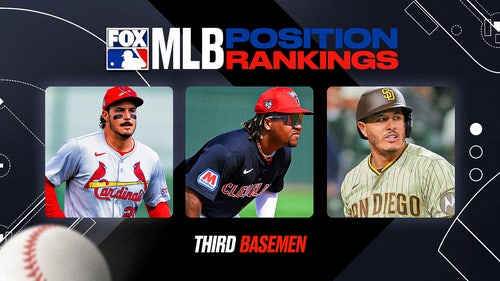
MLB: What Exactly Happened To Offense In the 1990s
As yet another Hall of Fame voting season is underway and debates rage on, one question is seemingly misunderstood: what exactly was behind the offensive explosion in MLB in the 1990s?
It’s no surprising thing to state that the 1990s ushered in an offensive explosion that seemingly just “corrected” itself in the last 3-5 years with a pretty heavy shift to pitching. However, when you read the discussions about the Hall of Fame votes for players from that era each offseason, you would think that there was only one reason – steroids/PEDs (which are not the same thing, but we’ll get into that later
In fact, there were many factors in play that definitely changed the game offensively for a time period from roughly 1993-2010. We’re going to take a look at each one of them here.
But First…
Just how much of an offensive change did we see in what is referred to as “the steroid era”?
Let’s start with a look at our first, and most oft-reported reasoning – performance enhancing drugs:
Steroids/PEDs – real/fake/placebo?
Let’s start first by defining exactly what we’re talking about. What exactly is a PED?
The simplistic view is that PED=steroid, but that’s not exactly true. A steroid is a performance enhancing drug, but a single oak tree is also part of a forest, and that’s where some of the discussion begins to get lost.
Anabolic steroids were banned by major league baseball in 1991, however, due to multiple reasons there was no real testing nor punishment for any PED until 2005, allowing players nearly a 15-year window where they could really use without any repercussion, even though it was technically outlawed by the league.
Performance enhancing drugs really would be better termed as performance enhancing substances. Most view a “drug” as something taken into the body in either pill form or through an injection, but modern PEDs are introduced to the system in all sorts.
That protein powder you stir into your smoothie in the morning? By definition, that’s a PED, as it’s a chemical compound intending to give you an increased amount of a certain substance (protein/testosterone/human growth hormone/etc.) than what you can get through typical diet and body response to exercise.
However, one of the things that has been found in more and more research lately is that PEDs really are not as “enhancing” as they’re cracked up to be.
In fact, utilizing a placebo in test subjects while telling them that they’re receiving a PED will actually see their performance improve, as found in a recent study.
In my non-writing life, I’m a big fan of power lifting for health, and while the sport is rampant with performance enhancing drugs (and more frequently REAL steroids than what are referred to as “steroids” in baseball writing), I’ve found in talking with some of the best trainers and lifters in the business that guys who use often are inspired to work harder in the gym, and if they’d just have that same dedication outside of the substances, they’d often see similar gains.
Now, that doesn’t mean that all gains are placebo, but players who did make the choice to use a PED were also tied with world-class trainers and cutting-edge training methods as far as baseball is concerned. It gets a little fuzzy to separate one from the other as far as where the real gains truly came from…
So, if there were reasons other than the added substances into the players’ bodies, what else could it be?
We’ll start with expansion, four teams added in the 1990s in all:
Expanding Horizons
Baseball has been adding teams since it began, so that’s nothing new, but since World War II, it has been notable that each expansion has done some drastic changing to the offense in that time period immediately following the expansion.
Statistically speaking, here’s what we are looking at 5 years and 10 years post-expansion. The number differentials are in relation to the year before expansion took place. For instance, the numbers you see cited for the 1993 expansions relate to what the numbers were in 1992 when reflecting on 1998 and 2003 following the expansion, not on the numbers in 1993.
Runs per Game
1961: +0.22, 1966: -0.32, 1971: -0.42
1969: +0.65, 1974: +0.7, 1979: +1.14
1977: +0.48, 1982: +0.31, 1987: +0.73
1993: +0.48, 1998: +0.67, 2003: +0.62
1998: +0.02, 2003: -0.04, 2008: -0.12
Home Runs per Game
1961: +0.09, 1966: -0.01, 1971: -0.22
1969: +0.19, 1974: +0.07, 1979: +0.11
1977: +0.29, 1982: +0.22, 1987: +0.48
1993: +0.17, 1998: +0.32, 2003: +0.35
1998: +0.02, 2003: +0.05, 2008: -0.02
Batting Average
1961: +.003, 1966: -.006, 1971: -.006
1969: +.011, 1974: +.020, 1979: +.028
1977: +.009, 1982: +.006, 1987: +.008
1993: +.009, 1998: +.010, 2003: +.008
1998: -.001, 2003: -.003, 2008: -.003
On Base Percentage
1961: +.004, 1966: -.014, 1971: -.007
1969: +.021, 1974: +.025, 1979: +.031
1977: +.009, 1982: +.004, 1987: +.011
1993: +.010, 1998: +.013, 2003: +.011
1998: -.002, 2003: -.004, 2008: -.004
Slugging Percentage
1961: +.011, 1966: -.012, 1971: -.023
1969: +.029, 1974: +.039, 1979: +.057
1977: +.040, 1982: +.028, 1987: +.054
1993: +.026, 1998: +.043, 2003: +.045
1998: +.001, 2003: +.003, 2008: -.003
It is notable that while run scoring has progressed over time in baseball, meaning the baseline for each of these expansions is different, the effect of the expansion on run scoring has been notable, and in the time period in question, baseball experienced two expansions, in 1993 and in 1998 with two teams added each time.
What is noted in multiple studies is that while expansion certainly adds players of lower quality to both the hitting and pitching pools, generally, the elite pitchers produce as they always did while elite hitters tend to beat up on the lesser pitchers to a notable amount.
Taking a look at single season home run leaders is notable as well. Of the 43 players who have hit 50 or more home runs in a single season, 27 of them did it within 10 years of an expansion of the game, and 7 did it exactly on an expansion season.
Roger Maris broke Babe Ruth‘s record in 1961 in an expansion year. Mark McGwire and Sammy Sosa had a ridiculous competition that broke Maris’ record in the 1998 expansion year.
However, it’s not just power, as the numbers above show. Historically, run scoring went down from the formation of the major leagues to the Black Sox scandal before heading up and really progressively moving up ever since.
It is notable that the first season of the major leagues, 10.47 runs were scored per game. In the most prolific single season of the 1993-2008 time period, scoring output was half of that.
It is also notable that during the prime of Babe Ruth, Lou Gehrig, and those dominant Bronx Bomber Yankee teams run scoring was actually higher on average than this time period. The thing that ended that time of offense was the second World War. From 1936 to 1943, run scoring dropped an astonishing 1.28 runs per game as players were called into service.
The game has ebbed and flowed in run scoring ever since, climbing nearly a full run from 1943 to 1950 to the point of averaging 4.85 runs per game. For reference, only 6 seasons of the 16 year run from 1993-2008 were even able to equal that number.
Run scoring in general has gone up for a time after expansion, then pitching will come back and reduce scoring, and then it seems that what happens is that rule changes take place (if not expansion) to help offense. This was the case in the late 1960s when standardizing the pitching mound made a huge difference as pitchers could have huge advantages depending on how their home team cultivated the mound with varying angles and heights.
Of course, just adding teams and depleting pitching doesn’t explain it all away. What about new ballparks?
From Ballpark to Bandbox
Now this is an angle that many have disputed, and often their own findings have to allow for the fact that modern ballparks can’t just be measured by their pure measures down the lines, straight away marks, and to half-way point “alley” marks.
Modern ballparks have all sorts of oddities added for a “unique” feel into each park, including things like a short wall in one spot or a place where the fence jots in for a short time before heading back, creating a spot to allow for home runs to sneak over the fence.
Based on ball park effects, here are the ball park effects of each previous park to each of the new parks added during the “steroid era” (in order of opening date):
-Baltimore’s Camden Yards: +5 Ballpark Factor vs. Memorial Stadium
-Texas’s Ballpark In Arlington: +3 Ballpark Factor vs. Arlington Stadium
-Cleveland’s Jacobs Field: +9 Ballpark Factor vs. Cleveland Stadium
-Colorado’s Coors Field: +11 Ballpark Factor vs. Mile High Stadium (which was the highest in the league in its two-year run as the Rockies’ home)
-Seattle’s Safeco Field: +3 Ballpark Factor vs. Kingdome (before fence adjustments that made Safeco tougher on hitters – and now more adjustments to make it hitter friendly)
-San Francisco’s Pacific Bell Park: +3 Ballpark Factor vs. 3Com Park
-Detroit’s Comerica Park: -3 Ballpark Factor vs. Tiger Stadium (before fence adjustments)
-Houston’s Enron Field (ouch on those naming rights!): +9 Ballpark Factor vs. Astrodome
-Milwaukee’s Miller Park: +6 Ballpark Factor vs. County Stadium
-Pittsburgh’s PNC Park: +4 Ballpark Factor vs. Three Rivers Stadium
-Cincinnati’s Great American Ball Park: -9 Ballpark Factor vs. Cinergy Field
-Philadelphia’s Citizens Bank Park: +12 Ballpark Factor over Veteran’s Stadium
-San Diego’s Petco Park: +3 Ballpark Factor vs. Qualcomm Stadium (and that’s before they moved in the fences!)
-St. Louis’s Busch Stadium III: -3 Ballpark Factor vs. Busch Stadium II (though in fairness, this was 2006 and one of the first built with pitching in mind)
That’s 14 ballparks that opened between 1994 and 2006 (not counting Tampa Bay and Arizona’s as those were result of an expansion and not new construction), and they averaged an increased Ballpark Factor of +50 in total, averaging to a +3.6, and that’s with three parks with a negative park factor difference in their new park.
So a few things in play here, what else? What about the training for the clean players? There were bigger guys in the league than ever seen before! How did they get that way?
Bulking Up
While many will throw out the “bash brothers” of Jose Canseco and Mark McGwire as poster boys for steroids, the Oakland Athletics were also one of the biggest innovators in strength training.
In fact, the Oakland Athletics were the first major league baseball team to hire a full time strength coach when they hired famous strength coach Bob Alejo in 1993.
Prior to Alejo joining the Athletics, frequently teams had either no strength facilities at all or had a Universal Gym set up with tons of pulley machines, which if anyone has done lifting, you know that those are basically the opposite of what you want to use to increase athletic and functional muscle.
In fact, one reference that Greg Shepherd, the founder of Bigger Faster Stronger, has mentioned multiple times when referring to baseball training is a major league scout in the early 1990s for the Kansas City Royals who told him about how his team would never use free weights because it ruins baseball players and attempted to cite examples (all poor examples of guys not doing lifts properly or lifting without proper supervision or knowledge of what they were doing).
The research into training the body for baseball has been increasing in droves every since that first hiring, though it took until 1999 for even 50% of the team to have a full time employee in strength and conditioning in their employ.
Frankly, explosive lifts like squats, deadlifts, and power cleans are perfectly aligned with the explosive power needed in the hips and core in a baseball player. I mentioned in a recent article that Bryce Harper was given loads of praise for a deadlift that was not only in bad form but probably not targeting his body in the way that would be best for baseball.
This is part of the issue still rampant in baseball training. Players utilize their own trainers, who know what it means to train a football player or an MMA fighter, but training for baseball-specific activity is quite different.
Many players began to at least find the benefits of free weights in the 1990s, and one particular player has been cited for his “deflation” after his playing career – Jeff Bagwell. Bagwell was notorious for his dedication to free weight lifting, and his career was ended by a shoulder issue. Those who are familiar with core power lifts know that a shoulder issue would make nearly all power lifts impossible to complete, and Bagwell has mentioned that he had to back away from power lifting for an extended time to allow his shoulder to heal.
So even clean players were getting better training, but that should have helped the pitchers as well, right? Well, maybe if they were throwing to the strike zone actually in the rule book…
The Amazing Disappearing Strike Zone
One of the biggest outcries in recent years as it comes to umpires has been the discussion of automated umpires.
So why has this become a “thing”?
Well, to put it bluntly, we had to get ridiculous levels of technology to tell umpires that they were terrible…and they’re not all that much better, but at least they’re more consistent.
Fivethirtyeight.com put out an article just a couple of seasons ago with tremendous research on where umpires are inconsistent, and this is after Major League Baseball put into effect concerted efforts to call the official strike zone.
In the 1990s, many of us can recall a number of different umpires. There are GIFs around the internet of the most offensively-umpired games, like the 1997 playoff game of Livan Hernandez against the Atlanta Braves.
Umpires were allowed to call “their” zone, and that was terribly inconsistent throughout the game, and research by multiple sources have shown that the zone primarily shrunk in these umpire choice zones rather than expanded (as most people remember).
In 1996, baseball actually added a provision to the rule book moving the strike zone from the top of the knees to the bottom of the knees. That doesn’t mean those pitches were actually called, but that they could be.
QuesTec has really revolutionized the evaluation of umpires, and in the early 2010s, umpires began meeting with MLB headquarters in New York on a frequent basis to review the computerized evaluations of their most recent games called.
The inconsistent zone did lead into the way many pitchers threw, and one of the guys who often was assumed to receive the benefit of inconsistent zones, Greg Maddux, mentioned in an interview I saw on MLB Network about Frank Thomas that he was glad to not have faced him often because with the zone in those days, you just never knew what you’d get for a strike on any given day, and Frank could punish if you were nibbling too much to find the edges of what worked that day.
Statements like that are a big indicator of what pitchers were going through on a day to day basis, not sure of whether a slider that caught the black of the plate knee high would be a strike one game to the next.
A more consistent strike zone as has been enforced with the increase in technology, and it’s been notable that pitching has been quite dominant with a more consistent zone in place.
If technology got the strike zone back on the right track, I’m guessing it probably changed over the era as well. How did that affect things?
Nerds! Nerds everywhere!!
Well, okay, nerds and cosplay enthusiasts.
I found that comment one of the most funny statements of the early 2000s. When asking a friend about her opinion of a few major league hitters, her comment was about the body armor they were all wearing and how they looked like cosplay enthusiasts dressed for a battle!
The technology came into the game in the form of tremendous swing analysis, in-clubhouse video, and slo-motion video analysis of every pitcher in the league.
Kevin Seitzer, the former Royals infielder (among other teams) mentioned once that he wished he could play now with the information present. His reasoning? In his day, guys had to pass along a “tell” that a pitcher had from ballpark to ballpark, often allowing that pitcher to get away with it for multiple seasons before anyone caught on.
Now, if a pitcher does something that gives away that he’s about to throw his curve, every hitter in the league knows about it tomorrow. The video is out there, transmitted digitally to every scout, who relays it to the front office, who sends it to the coaching staff, who instructs each hitter on how to spot it.
Of course, the general use of technology in bats is much better, but there’s been backlash on that as well as we saw a significant rise in bat breaks due to the construction of the bats in the high-offense era.
Technology in general has infiltrated our daily lives in such a way that it is impossible to truly measure the impact that it had, but certainly, no one was going out and putting together technology for pitchers to protect themselves from hitters until the recent head-protecting cap. Yet, we saw guys come to the plate looking like hockey goalies for nearly a decade!
That’s All Folks
So…what does it all mean?
Essentially, there was no “steroid era”. There was a period of time when a large confluence of events came together in a way that individually would have each influenced a spike in offense, but all added together drove offense ridiculous.
Oddly enough, going back in history finds that the run scoring environment for the extended period of 1993-1998 was actually bested by the “live ball” era from 1920-1940. Without WWII, who knows how long that era may have kept up its scoring pace?
While I’m not stating by any means that PEDs had no effect whatsoever on the increased offense of the era, to put even half of the blame at the feet of PEDs seems misguided and, frankly, lazy in light of all the evidence of other factors influencing the game.
Baseball is a game that has seen many times of ups and downs in the run-scoring and pitching-dominance of the league. One era happened to hold to the run-scoring side longer than expected. Consistently putting down, lessening the accomplishments of, or demeaning the numbers of players from this time frame of baseball history is no less egregious than discounting pitching numbers of Sandy Koufax because he pitched in an era without a consistent mound or the hitting numbers of Babe Ruth because he never faced an African-American player.
Baseball’s an amazing game that had an era of incredible offense. Rather than tear it down, let’s enjoy that it happened, celebrate the best of that particular era, and move forward with the game, as baseball has done for over 150 years now.
I’m sure you have comments or discussion, so feel free to fire off below!!
More from Call to the Pen
This article originally appeared on
